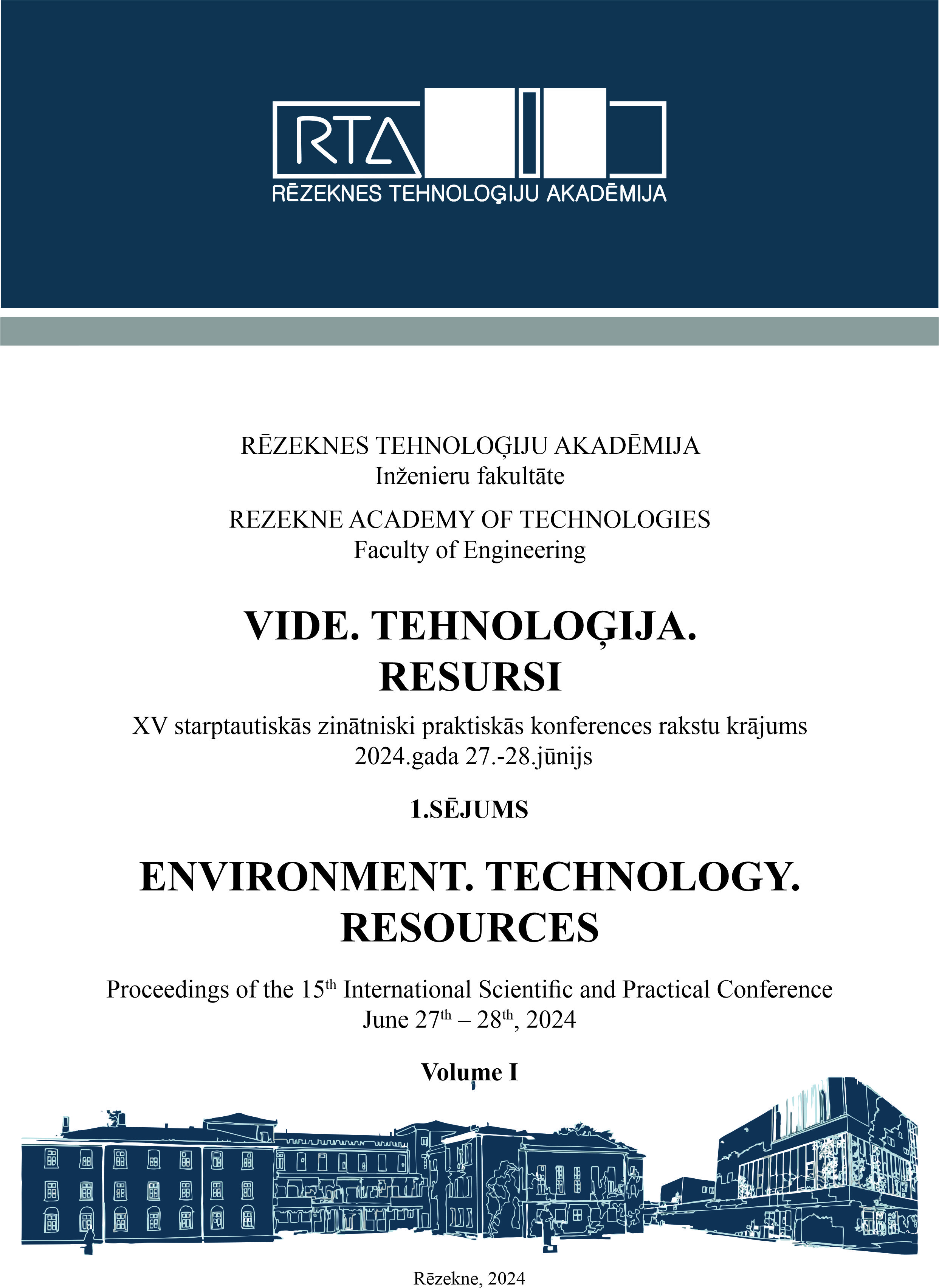THERMODYNAMIC EMPIRISM FOR DESCRIBING ATMOSPHERIC POLLUTANTS
DOI:
https://doi.org/10.17770/etr2024vol1.7980Keywords:
adiabatical constant, biosphere, greenhouse gases, pollutantsAbstract
Humanity is currently subject to excessive pollution of the Biosphere and the atmosphere that comes from anthropogenic activity. The global warming is the most acute problem that has a negative impact on the state of the biosphere as a whole. The long empirical analysis on the state of the atmosphere makes it possible to develop quantitative expressions that give a dependence of the atmospheric temperature variation depending on the accumulation of anthropogenic polluting gases with greenhouse effect. One of the gases with a greenhouse effect is carbon dioxide, which has a major contribution to global warming. The method suggested in the paper focuses on the empirical analysis with the application of the thermodynamic laws describing the state of the atmosphere and gives the results of the validation within certain limits of the variation of the atmospheric temperature as the dependence of the accumulated concentration of the polluting gases with greenhouse effect. The relational connection between variations of concentrations and of the temperature is found by the equation of state of the ideal gas, assuming that the atmosphere can be described by this equation and the combination with the adiabatic thermodynamical equation leads to the expression which contains those variations. Annually, the monitoring stations record variations of concentrations and temperatures. The last 40 years the average temperature of the atmosphere is elevated up to 10C. The respective calculations by the application of thermodynamic expressions lead to the same order of 1 0C. It is explained by the application of thermodynamic physico-chemical laws that the rate of photosynthesis is comparatively low compared to the rate of additional excessive accumulation of carbon dioxide that comes from anthropogenic activity. The importance of the suggested method allows us to conclude about the validation of the method with the direct application of analytical expressions of the state of the atmosphere. Statistical analysis is very widely applied in general for data analysis, but it would be recommendable physico-chemical laws to be applied directly with a wider retrospective and the most important thing is that it allows the control of both the real recorded values and to be compared with those calculated by the thermodynamic method. The practical importance of this expression is based on the fact that the anthropogenic accumulation of carbon dioxide is followed by the accumulation of heat excess in the atmosphere, and in its turn to the increasing of the average global temperature of the atmosphere. one thing it is important to mention that the effect which takes place must be explained and this explanation is given by physical-chemical methods based on thermodynamic phenomena for the atmosphere.
Downloads
References
W.M. Haynes, CRC Handbook of Chemistry and Physics ,CRC Press. 2017, pp. 14-1, 14-50.
H.P. Maarten, Ambaum,Thermal Physics of Atmophere, Elsevier Inc. 2020, pp. 65-89.
L. D. Landau and E. M. Lifshitz, Statistical Physics, Part 1. Pergamon. 1980, pp. 106-140.
P. E. Lydolph, Don Temple and Denise Temple, The Climate of the Earth, Rowman and Littlefield Publishers Inc., 1985, pp. 301-365.
J. Jacob Daniel, Introduction to Atmospheric Chemistry, Princeton University Press, 2000, pp. 189-243.
G.Lente, K. Ősz, K. Barometric formulas: various derivations and comparisons to environmentally relevant observations. ChemTexts 6, 13, 2020, https://link.spinger.com/article/10.1007, https://doi.org/10.1007/s40828-020-0111-6
U.S. Standard Atmosphere, 1976, Washington, https://www.ngdc.noaa.gov/stp/space-weather/online-publications
Rebecca Lindsey and LuAnn Dahlman, "Climate Change: Global Temperature", 2024, Climate Change: Global Temperature | NOAA Climate.gov
"Last four years have been the warmest on record – and CO2 continues to rise", 7th January 2019, https://climate.copernicus.eu/
NASA Goddard Institute for Space Studies , 2023, GISS Surface Temperature Analysis (GISTEMP), https://data. giss.nasa.gov./gistemp/
Bhola R. Gurjar, Luisa T. Molina and Chandra S. P. Ojha, Air pollution, Health and environmental impacts, Taylor & Francis Group, 2010, pp. 109-249
J.Hansen, R. Ruedy, M. Sato, and K. Lo, Global surface temperature change, Rev. Geophys.,48, 2010, RG4004, doi:10.1029/2010RG000345, https://agupubs.onlinelibrary.wiley.com/doi/epdf
Downloads
Published
Issue
Section
License
Copyright (c) 2024 Mihai Petrov, Zdravka Nikolaeva, Aleksandar Dimitrov, Velichka Traneva

This work is licensed under a Creative Commons Attribution 4.0 International License.



